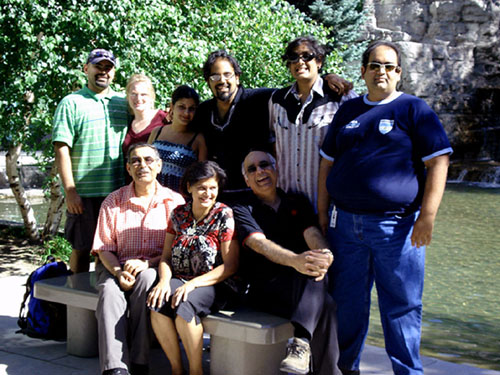 |
| Archival photo: Huts that Indians called home in the 19th and early 20th centuries |
Indians in Trinidad first celebrated the event at Skinner Park, San Fernando on the centenary of Indian arrival, May 30, 1945.
The Acting Governor representing the Government of the United Kingdom attended indicating the significance of the observance. Other local dignitaries who addressed the large crowd included Timothy Roodal, George Fitzpatrick, Adrian Cola Rienzi, and Murli J. Kirpalani.
Greetings were also read from Mahatma Gandhi, Lord Wavell, and Colonel Stanley, the Secretary of State for the Colonies.
The celebration declined following the grand Centenary extravaganza in 1945. By the 1950s, Indians who came to Trinidad in the post-slavery era to work on the plantations were still regarded as outsiders and treated as "coolies".
The Divine Life Society of the Chaguanas started to revive the event in the 1970s with an annual procession and ceremony titeled Indian Emigration Day.
In 1976 the Indian Revival and Reform Association (IRRA) was formed to renew pride in Indian heritage and Indian culture. It formed a committee to revive the memory of the coming of Indians to Trinidad on May 30, 1845 - Indian Emigration Day.
The first active step was taken in early 1978, when they produced and distributed a pamphlet with the title “Indian Emigration Day May 30, 1978”, giving a brief account of the Indians and the importance of the event.
The pamphlet listed the names of the first pioneers with a short description of the achievements of Indians in Trinidad since 1845.
In 1979 when the group got the attention of Satnarayan Maharaj the Secretary General of the Sanatan Dharma Maha Sabha (SDMS), who agreed to organize a major celebration at Lakshmi Girls College on May 27, 1979.
The two groups later agreed to call the event Indian Arrival Day. The 1979 celebration was a great success and included the presence of some of the original immigrants born in India.
By 1980 Indian Arrival Day celebrations were held at the Spring Village, Cedros, Penal, San Juan, Chaguanas, and many other parts of the country. By 1985 there were more than 10 significant Indian Arrival Day celebrations taking place with the Hindu community taking the lead in the development of the celebrations.
In 1991 Members of Parliament Trevor Sudama and Raymond Pallackdarrysingh first introduced to the House of Representatives the concept that Indian Arrival Day should be made a national public holiday.
This call to make Indian Arrival Day a public holiday continued to be unheeded until 1995 Prime Minister Patrick Manning declared that the 150th Anniversary would be a public holiday called Indian Arrival Day, but thereafter the holiday will be called Arrival Day.
The 1995 celebrations surpassed the 1945 celebrations with the Maha Sabha having major celebrations in Trinidad along with the National Council of Indian Culture (NCIC) under the leadership of Hans Hanoomansingh.
In 1995 Prime Minister Basdeo Panday declared that 30 May would be known as Indian Arrival Day and not Arrival Day. Manning refused to accept that and when he returned to office he insisted that the word Indian would be removed. That remains the position of the party he headed until 2010, the People's National Movement (PNM).
The PNM mayor of Port of Spain, Louis Lee Sing said recently the city would celebrate Arrival Day.
(With files from Wikipedia and Dr Rampersad Parasram)



No comments:
Post a Comment